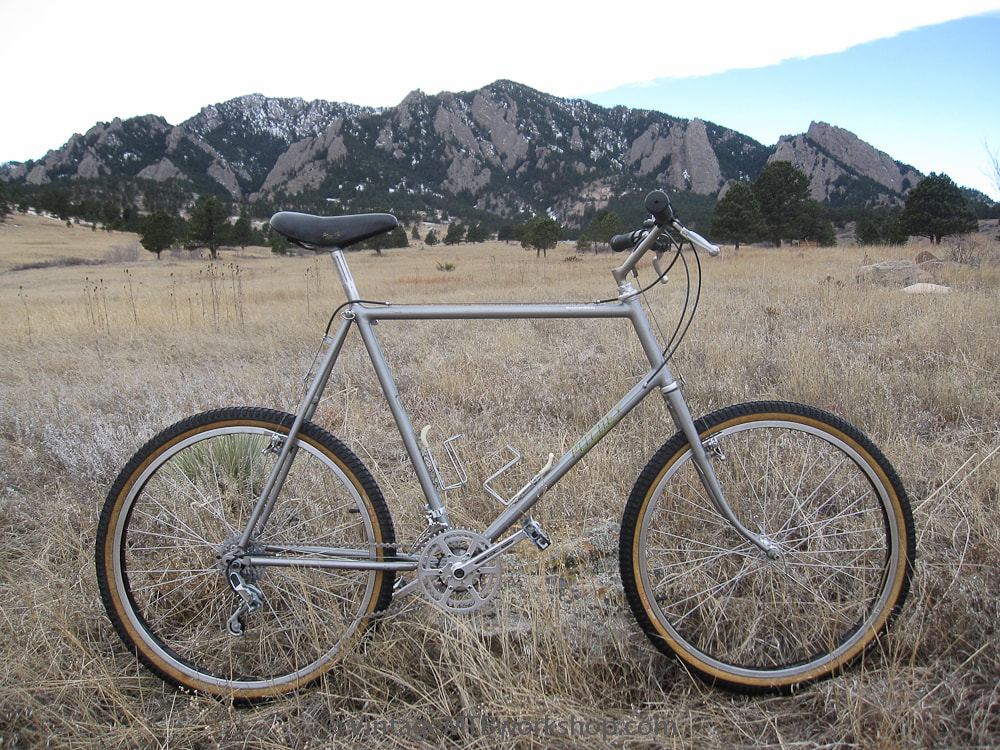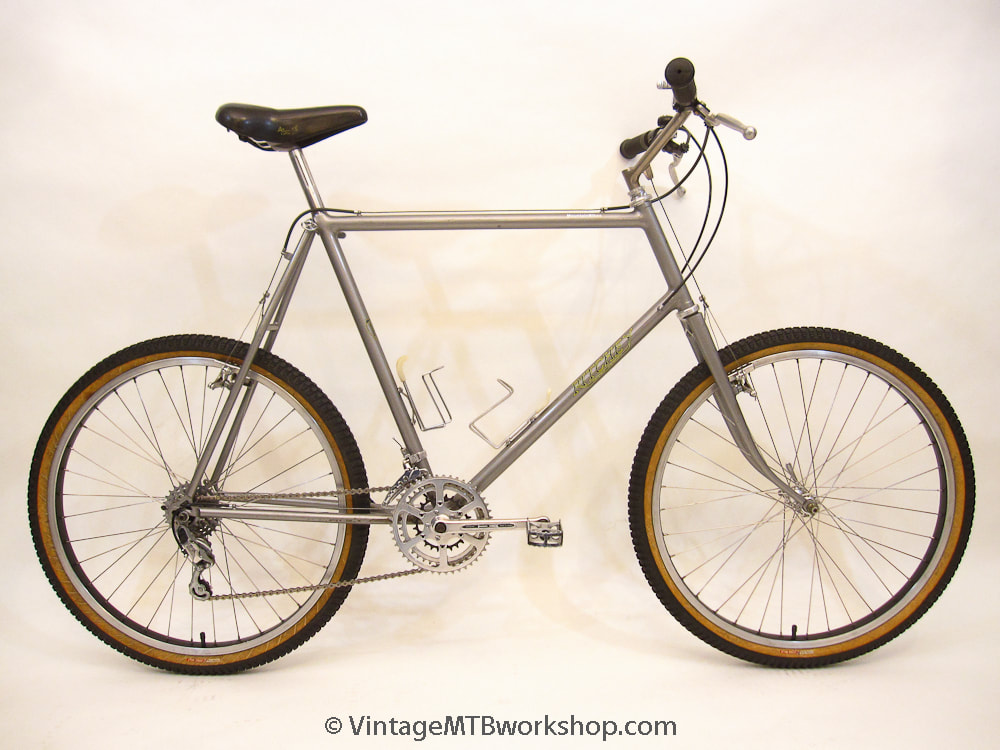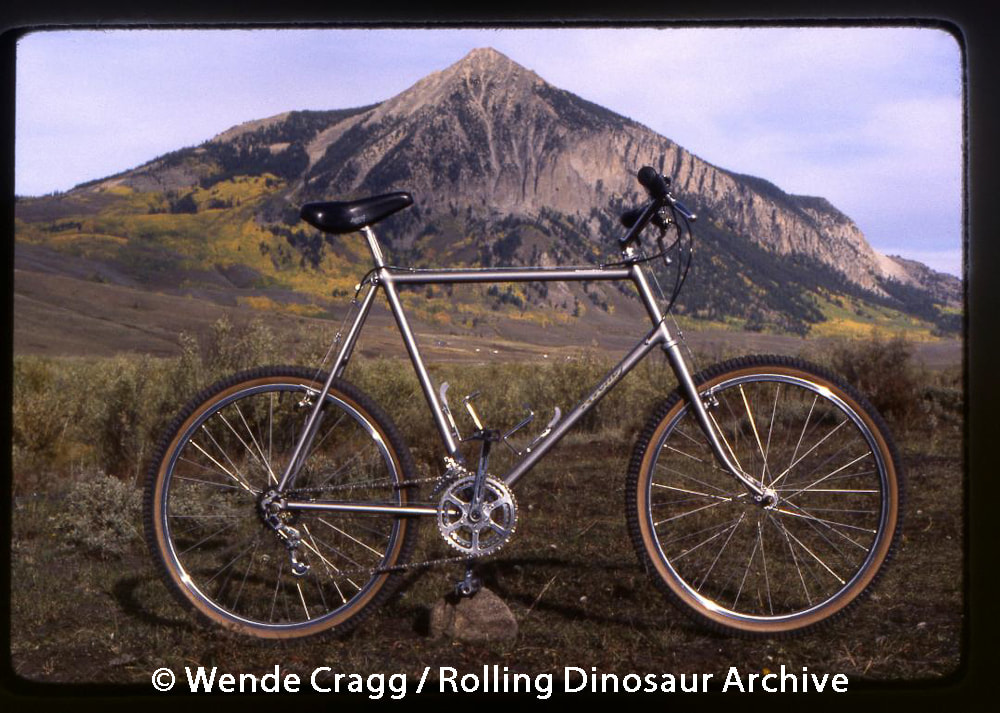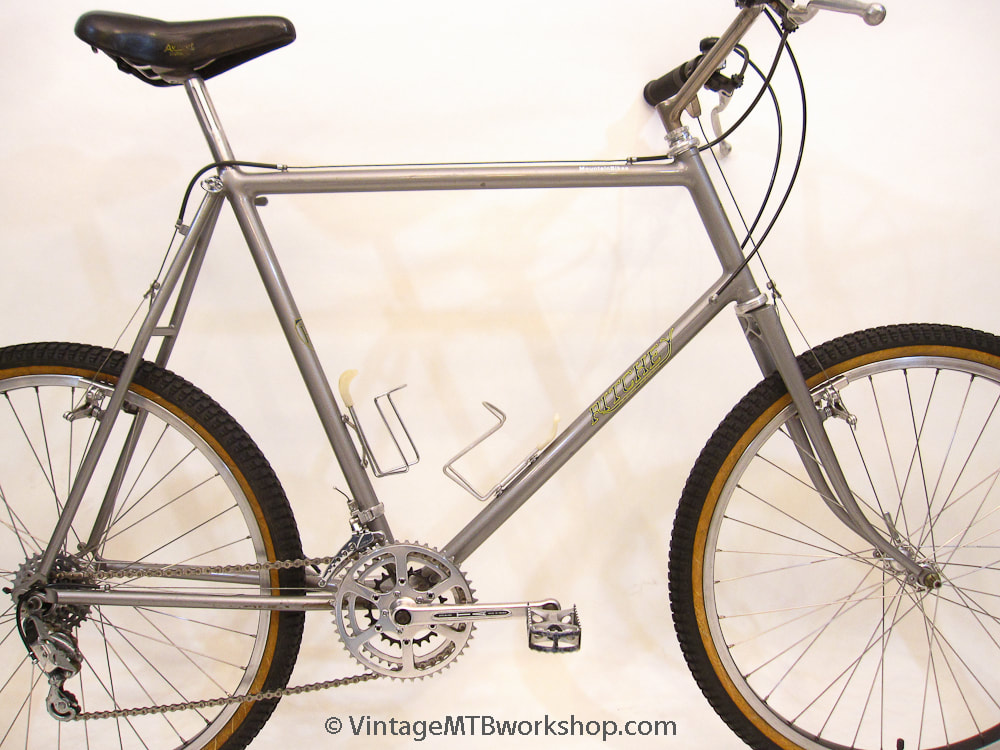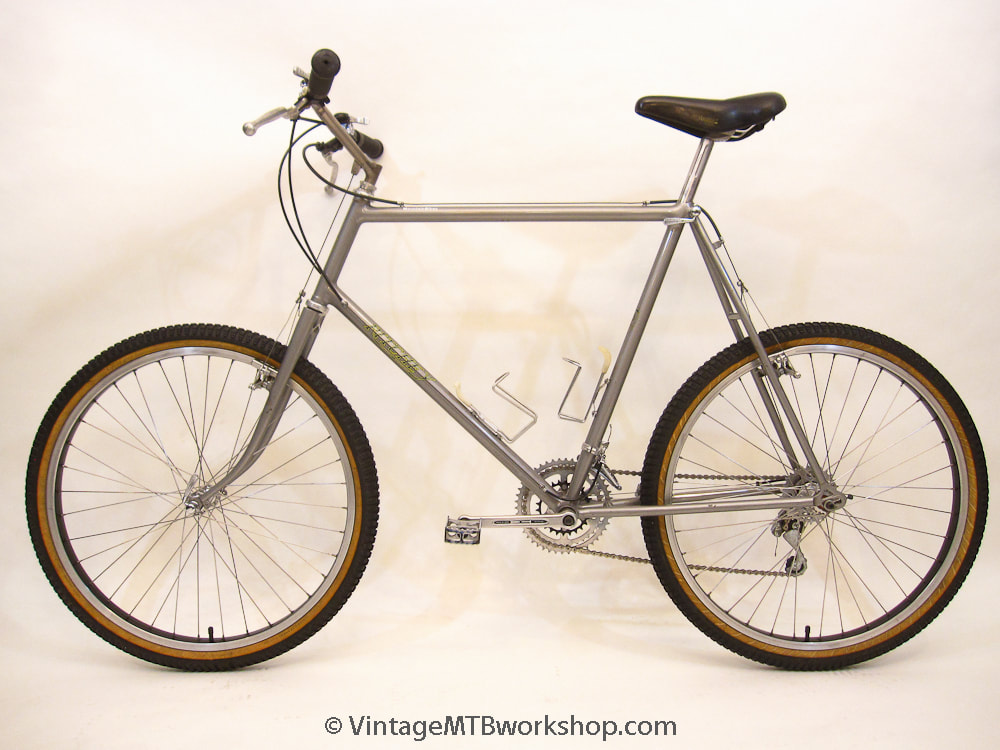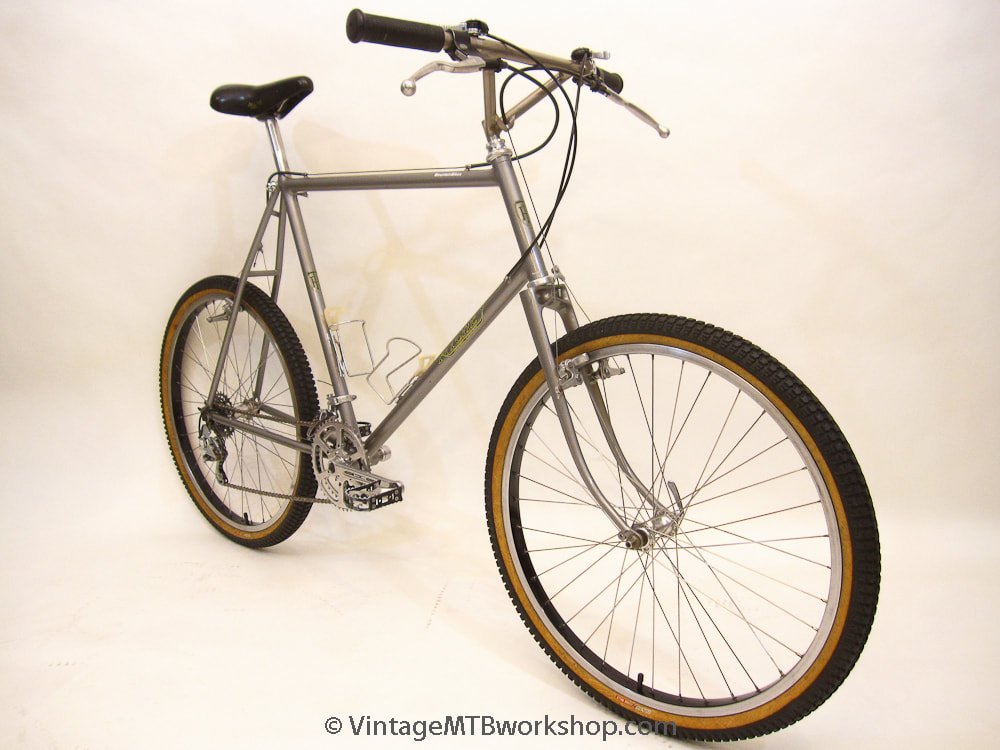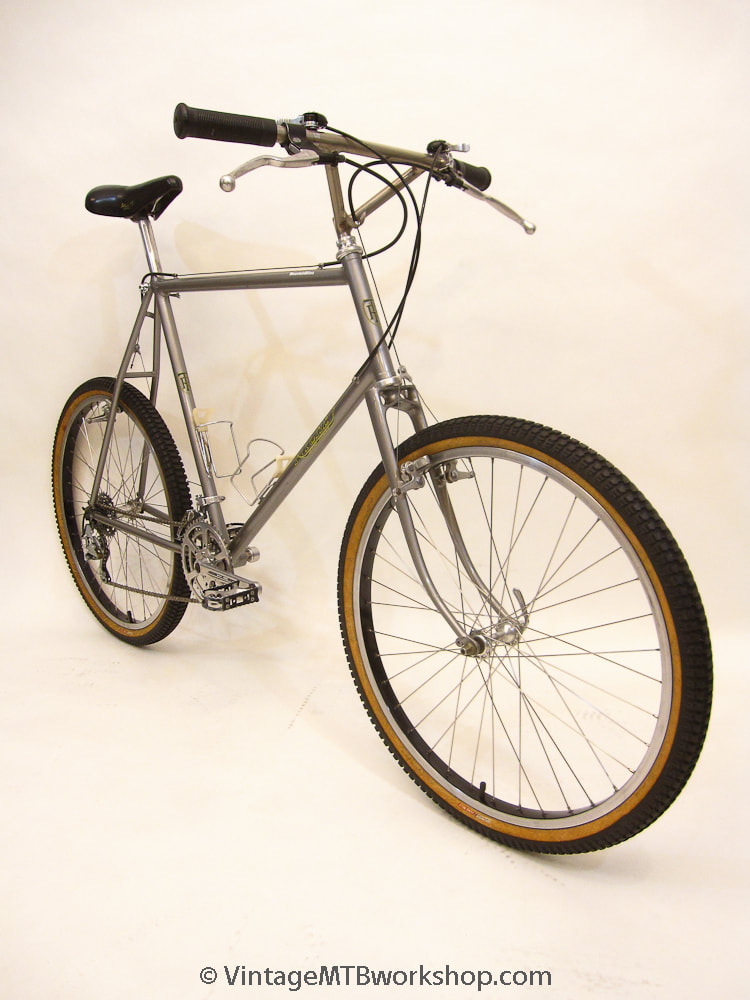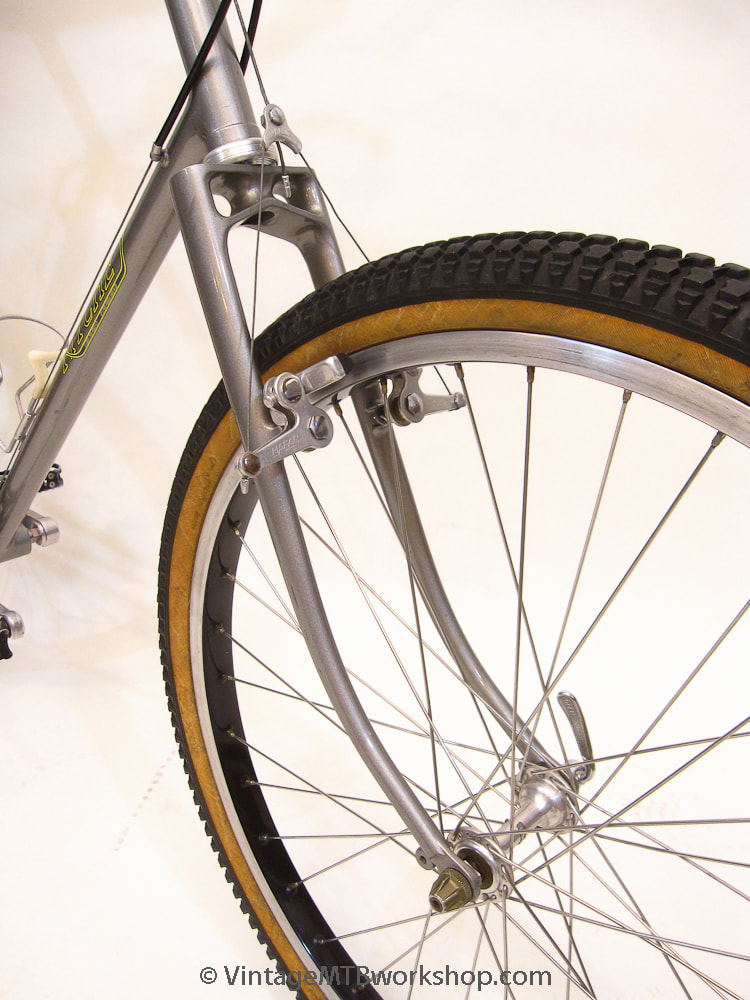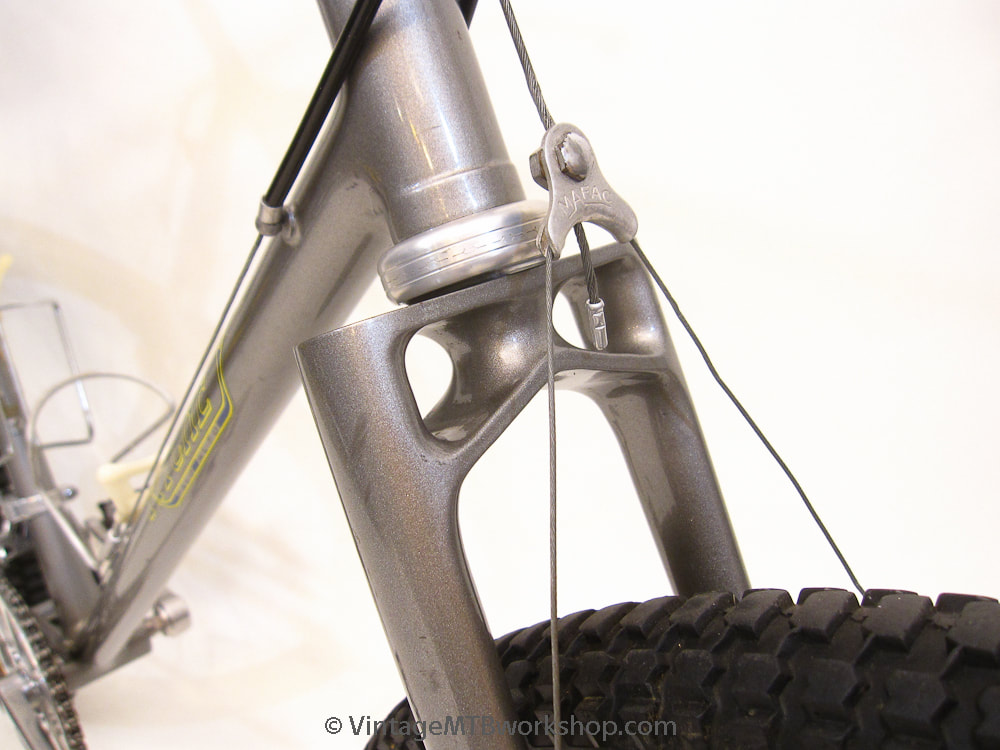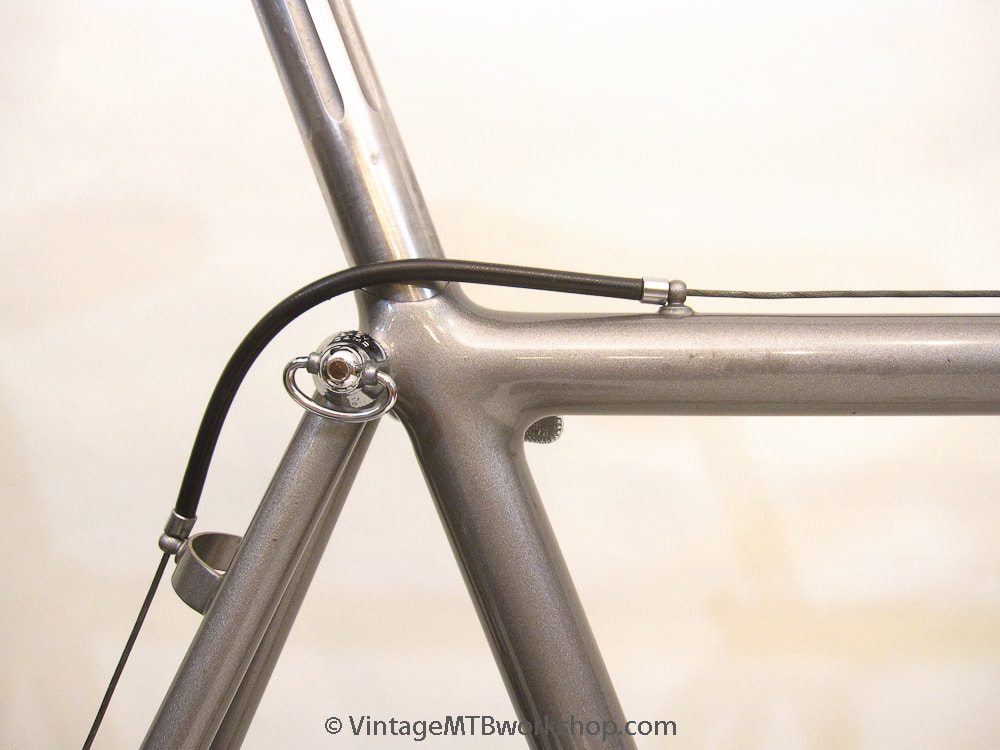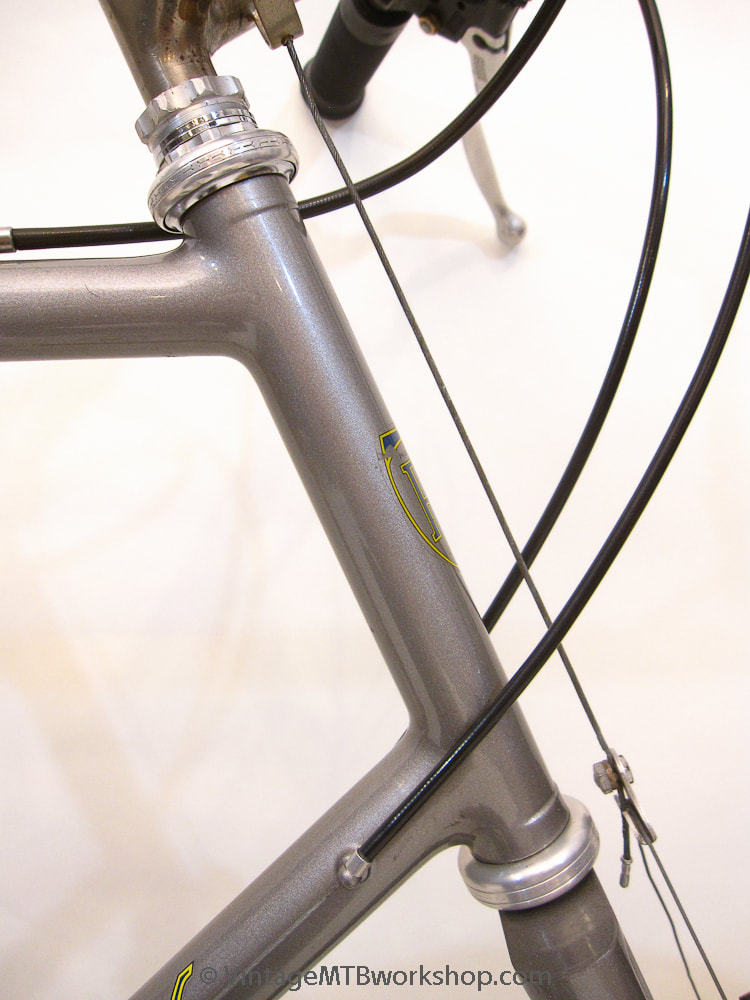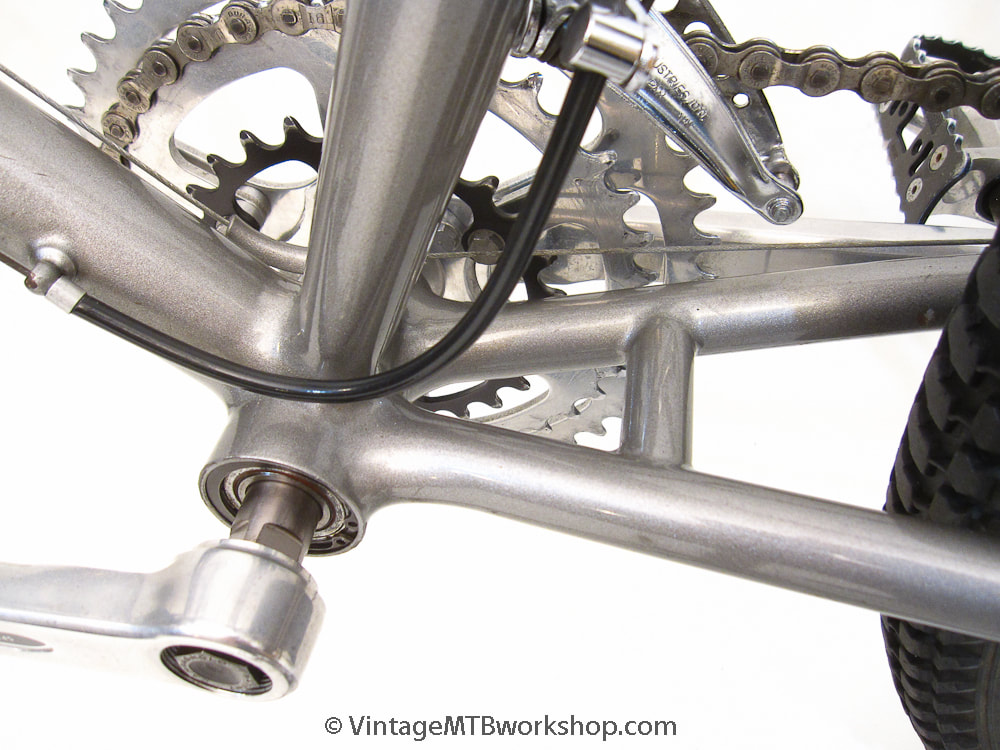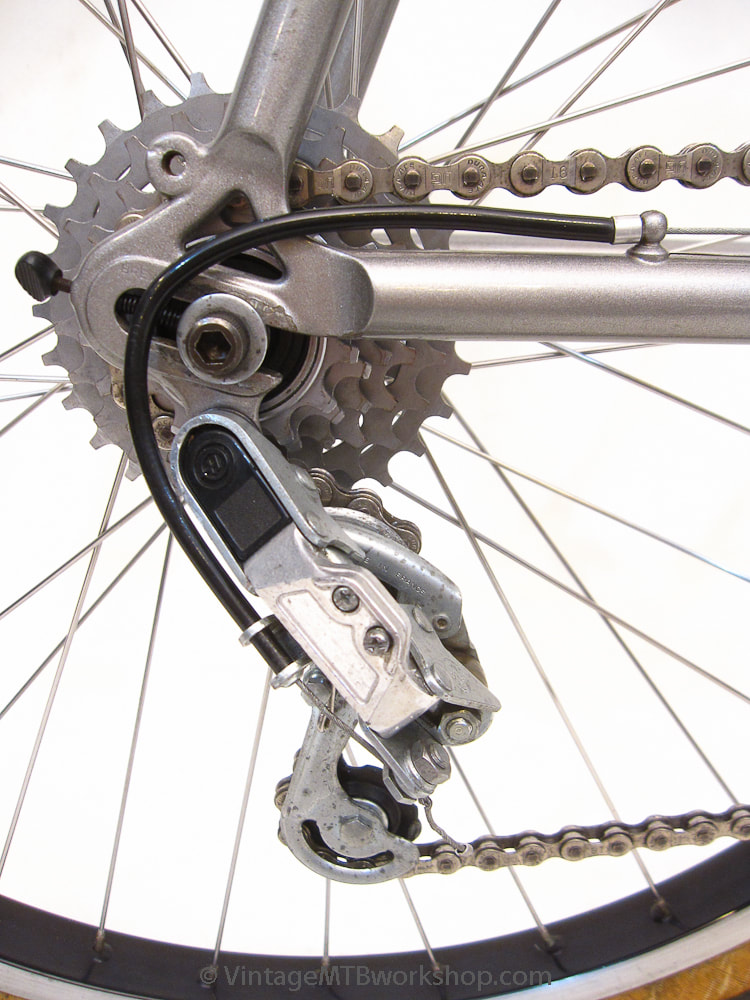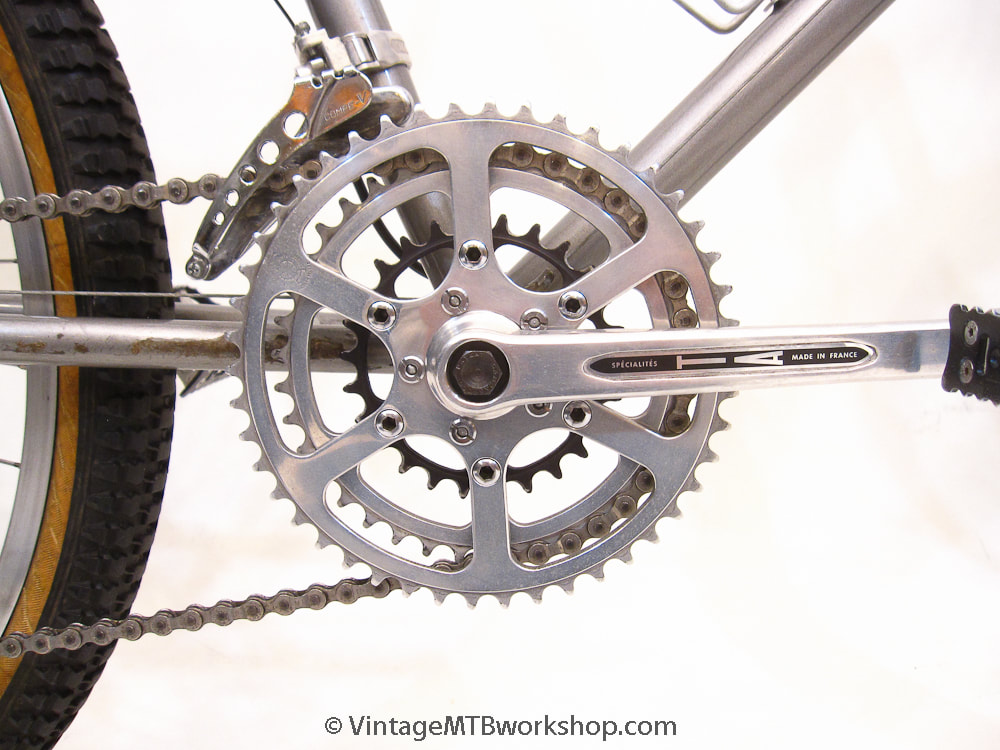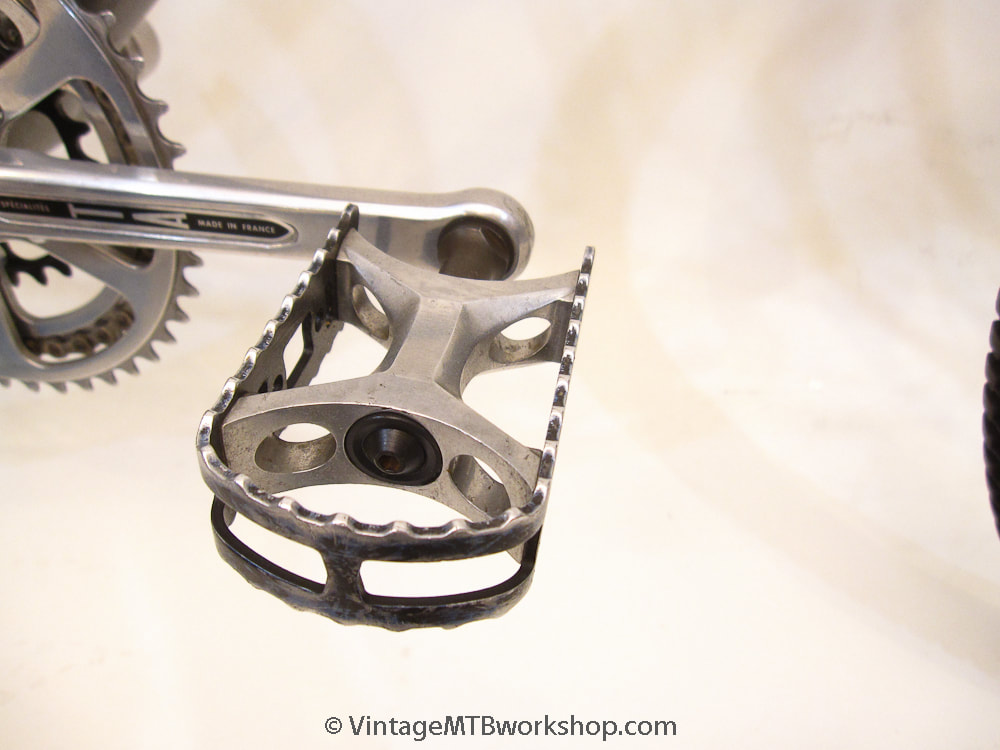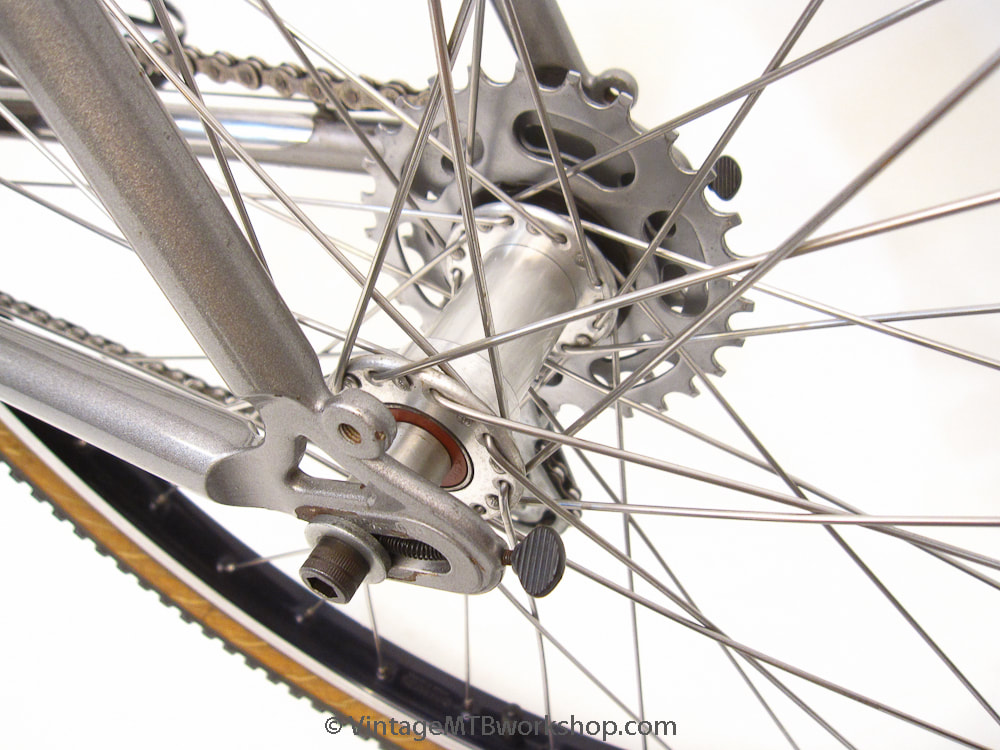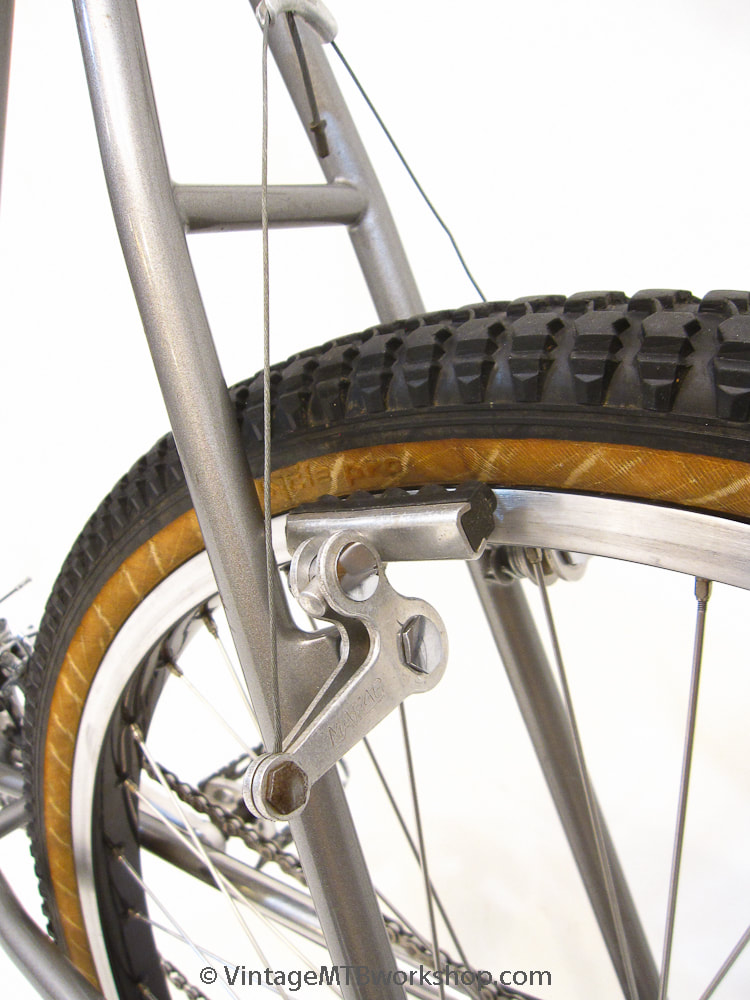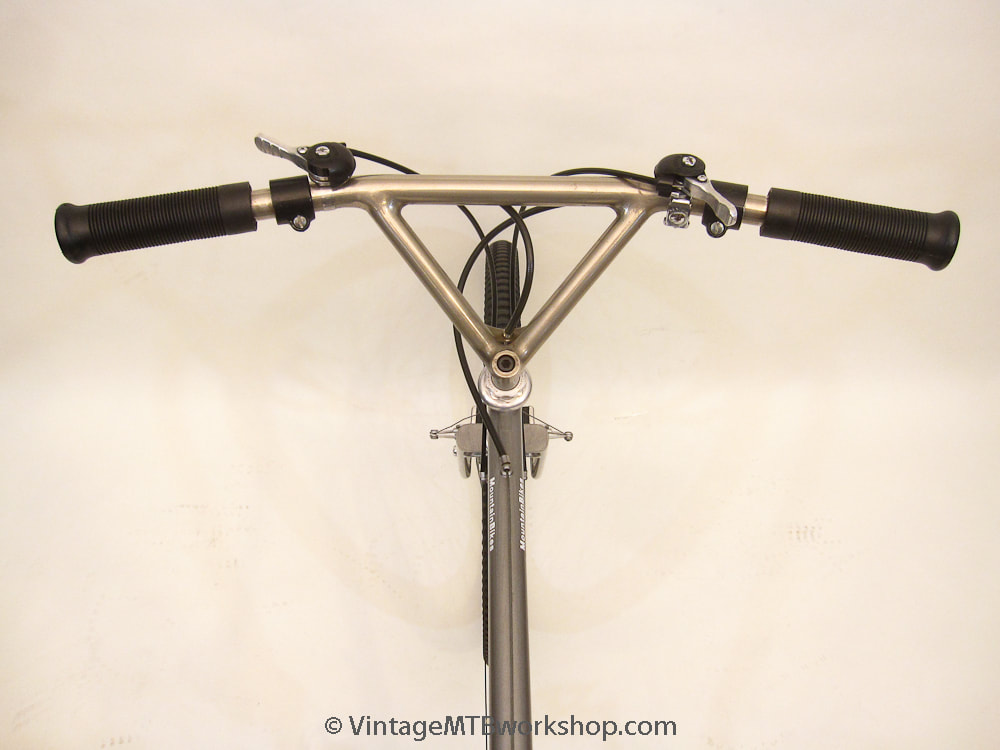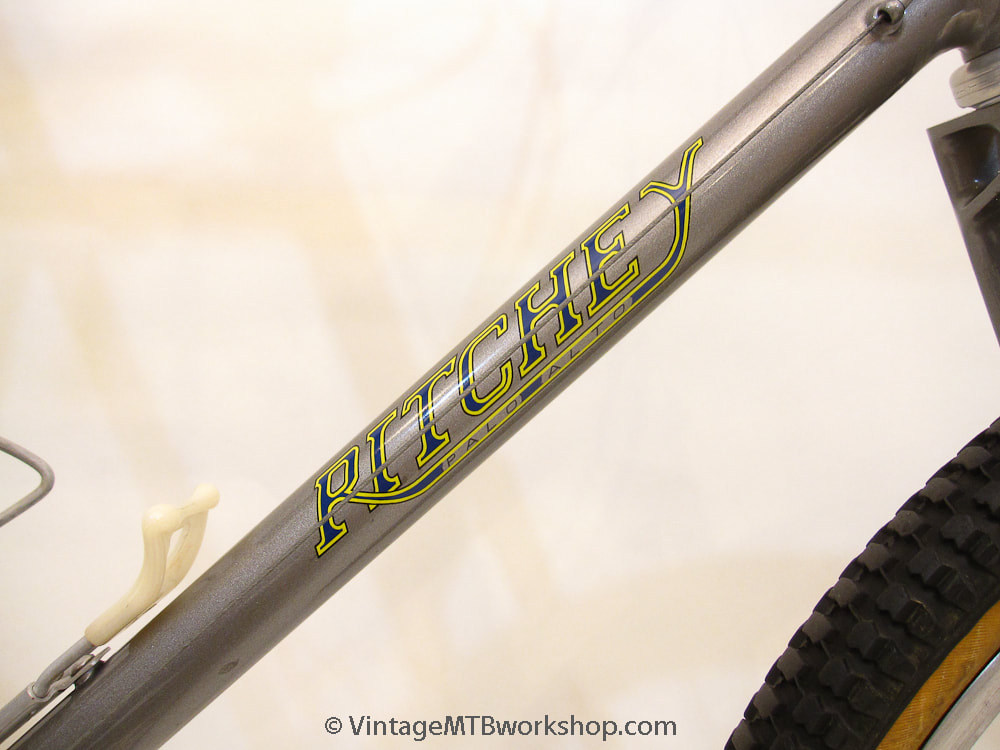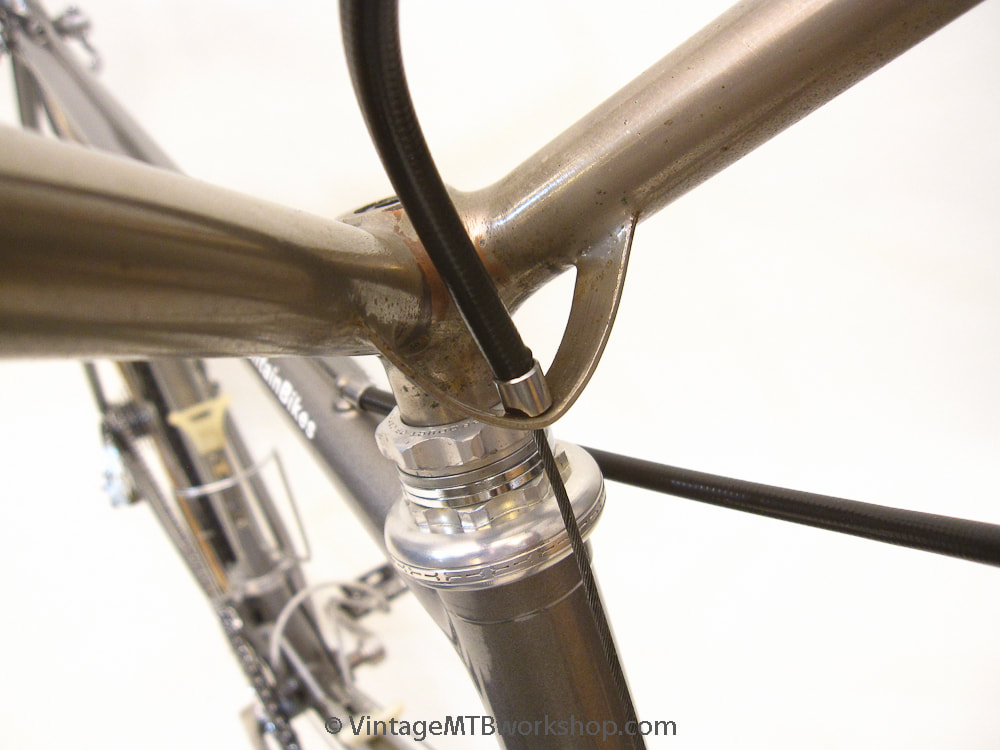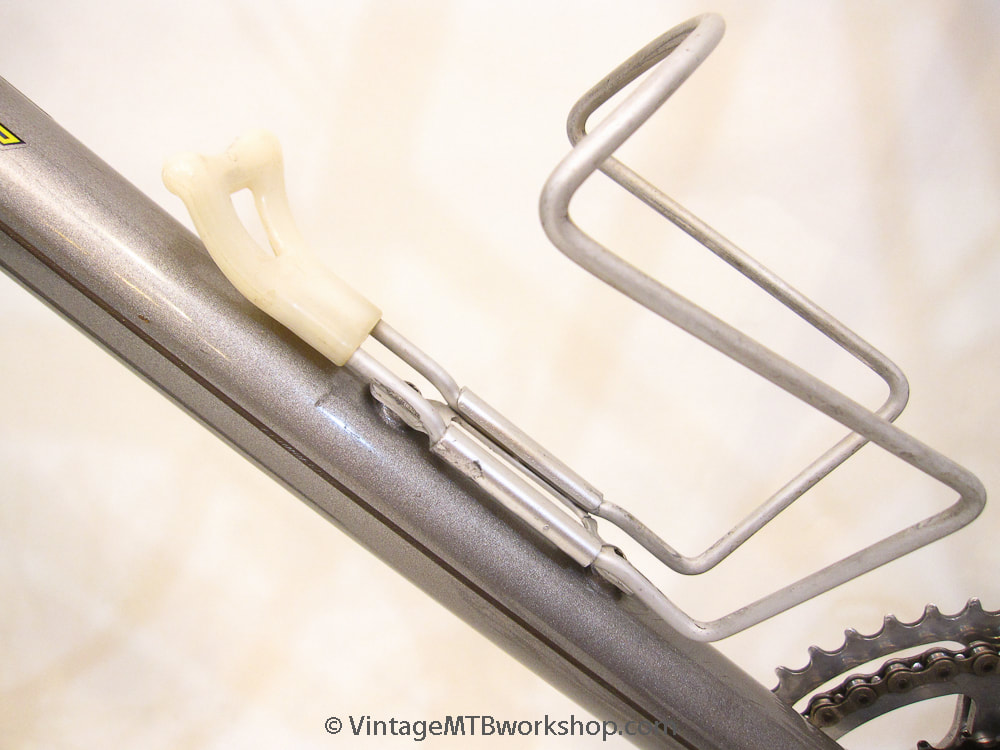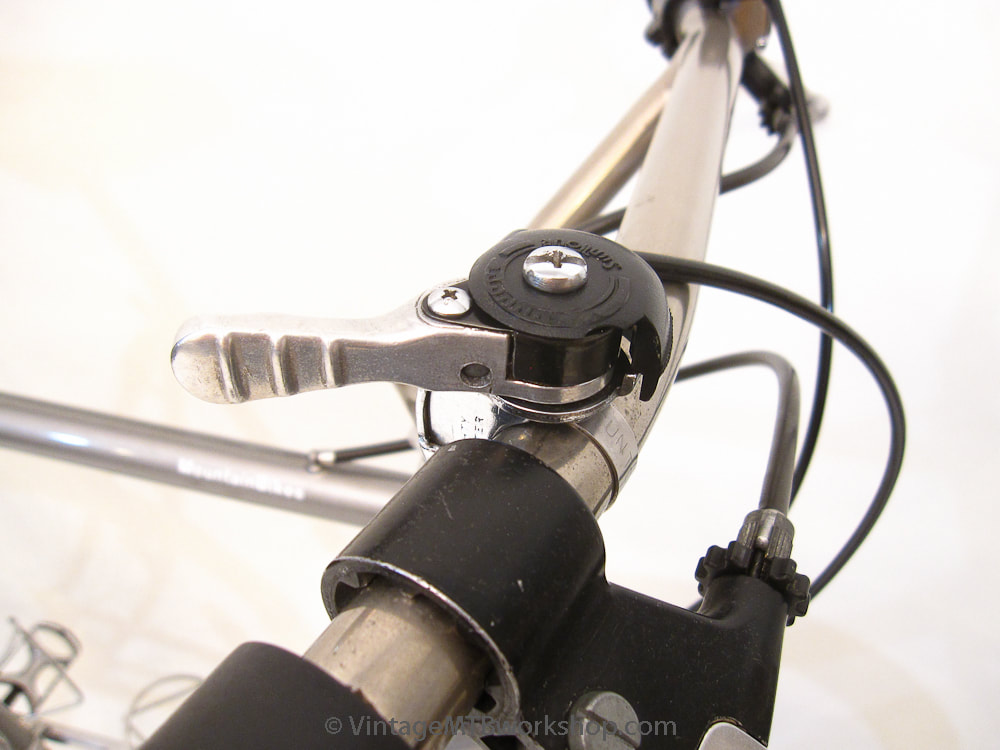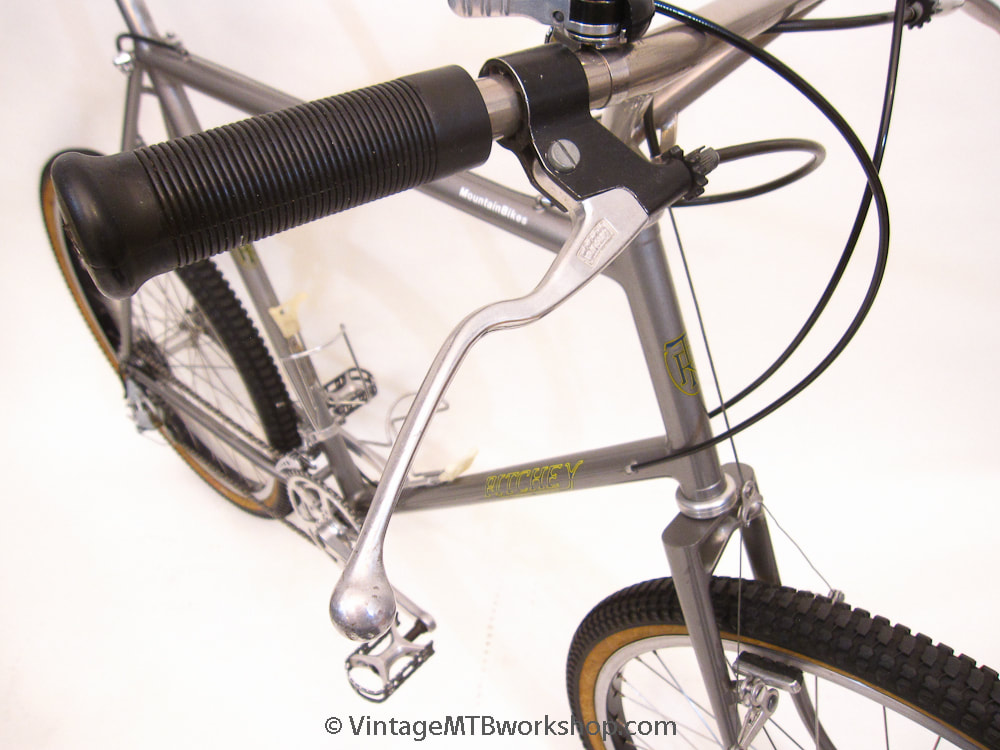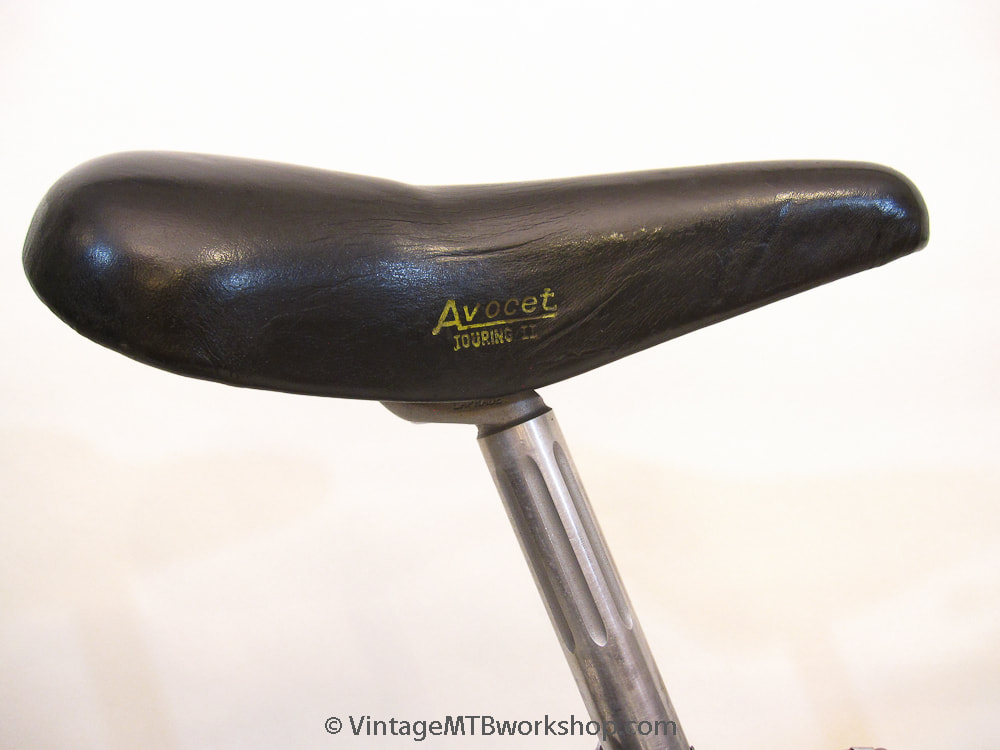1980 Ritchey Mountain Bikes
After the initial dozen or so bikes built by Tom Ritchey were sold through Mountain Bikes, the San Anselmo shop started by Charles Kelly and Gary Fisher, the demand for these new "balloon" tire bikes started to take off. While Tom was a prolific builder, he did not enjoy making the labor-intensive forks required to clear the larger tires. At some point, Tom was charging as much for a fork as an entire frame, so Charles and Gary started looking to other builders around the Bay Area to make the forks. John Padgett of Sacramento made an initial batch of 10 forks with Reynolds fork blades supplied by Gary; however, the blades were intended for 700c tandem bikes and Gary did not specify an axle to crown measurement. As a result John made the forks full-length, which was 1.5 inches longer than was typical for a 26-inch wheel bike. To use these extra tall forks while maintaining top tubes that were horizontal and not sloping backward, Tom had to make a special batch of frames to compensate. However, the only change made was leveling the toptube, with all other dimensions in the frame fixture held at measurements typical of Ritchey-built frames at the time. As a result, the cranksets ended up 3/4 inch higher off the ground, or one-half of the extra fork length, and the head angles were about 3 degrees slacker. While bikes were going toward more nimble 69 and 70 degree head tube angles, this bike had an "enduro" style 66 degree angle.
When Mike Sinyard of Specialized came to Mountain Bikes looking to buy a couple of frames that he would eventually have replicated in Japan and marketed as the Stumpjumper, he was sold two of these special frames with the long forks and slack front ends. While the first run of Stumpjumpers didn't ended up with extra tall forks, they did have very slack geometry, which has often been panned in mountain bike history.
This example from the batch of ten bikes was brought out to Crested Butte, CO in the Fall of 1980 for Fat Tire Week and the Pearl Pass Tour. As shown below, Wende Cragg took a photo of this bike with Mount Crested Butte in the background. The bike was later sold back at the San Anselmo shop and ridden all over Marin, including Mt. Tamalpias. The bike has been preserved in pristine condition over the years.
When Mike Sinyard of Specialized came to Mountain Bikes looking to buy a couple of frames that he would eventually have replicated in Japan and marketed as the Stumpjumper, he was sold two of these special frames with the long forks and slack front ends. While the first run of Stumpjumpers didn't ended up with extra tall forks, they did have very slack geometry, which has often been panned in mountain bike history.
This example from the batch of ten bikes was brought out to Crested Butte, CO in the Fall of 1980 for Fat Tire Week and the Pearl Pass Tour. As shown below, Wende Cragg took a photo of this bike with Mount Crested Butte in the background. The bike was later sold back at the San Anselmo shop and ridden all over Marin, including Mt. Tamalpias. The bike has been preserved in pristine condition over the years.
The Build
Year: 1980
S/N: N/A Frame: Ritchey Mountain Bikes Fork: John Padgett Bi-plane Stem: Ritchey Bullmoose Headset: Shimano 600EX Arabesque Bottom Bracket: Cartridge Bearing Handlebar: Ritchey Bullmoose Shifters: Suntour Mighty Click Front Derailleur: Suntour Compe V Rear Derailleur: Huret Duopar Brake Levers: Magura Motorcycle Front Brake: Mafac Tandem Rear Brake: Mafac Tandem Crankset: T.A. Specialties Chainrings: T. A. Specialties 28-38-48 Pedals: Suntour BMX MP-1000 Hubs: Dura Ace 7100 / Bullseye Sealed Bearing Rims: Ukai 26 x 1.75 Tires: Cycle Pro Snakebelly 26 x 2.125 Wheel QR: Dura Ace / Phil Wood Bolt-on Seatpost: SR Laprade Seatpost QR: Campagnolo Nuovo Record Saddle: Avocet Touring II Grips: Flanders Jackhammer Cogs: Suntour Winner Freewheel Chain: Dura Ace UG with quick link "Enduro" Ritchey Geometry: Headtube Angle: 66 degrees Seattube Angle: 69 degrees Bottom Bracket Height: 12.25 inches Fork Axle to Crown: 16.5 inches (419 mm) Fork Offset: 60 mm Chainstays: ~18.5 inches Seat Tube: 23 inches Top Tube: 23.75 inches "Normal" Ritchey Geometry: Headtube Angle: 69 degrees Seattube Angle: 71 degrees Bottom Bracket Height: 11.5 inches Fork Axle to Crown: 15 inches (381 mm) Fork Offset: 50 mm Chainstays: ~18.5 inches Seat Tube: 20 inches Top Tube: 23.25 inches |
